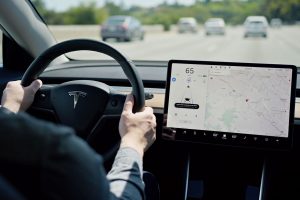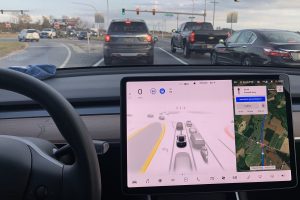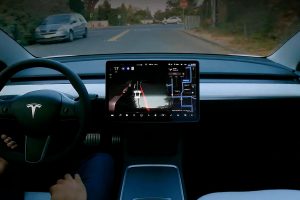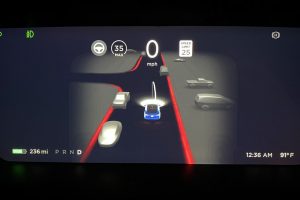A Tesla driver involved in an accident in California over two years ago is now being formally charged with two counts of vehicular manslaughter. Investigations from the National Highway Traffic Safety Administration following the accident stated Tesla Autopilot was in use, and the agency confirmed to us that it would release findings soon.
On December 29, 2019, a Tesla Model S left a freeway and ran a red light in a Los Angeles suburb, striking a Honda Civic and killing two people. The driver, Kevin George Aziz Riad, 27, was charged in October with two counts of Vehicular Manslaughter by Los Angeles County prosecutors. Riad has pleaded not guilty and is free on bail while the case is still pending.
The case is somewhat groundbreaking as it appears Riad will be the first person to be charged with a felony count in the U.S. while utilizing semi-autonomous driving technologies. It is not the first instance of criminal charges being filed when a semi-autonomous driving capability is concerned, but it is the first with a “widely used driver technology,” according to the Associated Press, who first reported the story. An Uber driver in Arizona was charged with Negligent Homicide in 2020 when testing a fully autonomous vehicle on public roads.
Filings and charge documents from the LA County prosecutors do not mention Autopilot. Investigators from the NHTSA were present at the crash and confirmed to Teslarati this morning that the vehicle was using Autopilot at the time of the accident. The NHTSA said:
“NHTSA reminds the public that no commercially available motor vehicle today can drive itself. Whether a L2 automated driving system is engaged or not, every available vehicle requires the human driver to be in control at all times, and all State laws hold the human driver responsible for the operation of their vehicles. Certain advanced driving assistance features can promote safety by helping drivers avoid crashes and mitigate the severity of crashes that occur, but as with all technologies and equipment on motor vehicles, drivers must use them correctly and responsibly.”
Additionally, the NHTSA will share the findings of the crash investigation soon, the agency told us.
While Tesla Autopilot is an advanced driver assistance system, or ADAS, it still requires the driver to remain attentive. Drivers must be prepared to take over at any time, which requires them to remain just as vigilant as if they were driving the vehicle themselves. Tesla’s FAQ regarding Autopilot on its website states:
“Yes. Autopilot is a hands-on driver assistance system that is intended to be used only with a fully attentive driver. It does not turn a Tesla into a self-driving car nor does it make a car autonomous. Before enabling Autopilot, you must agree to ‘keep your hands on the steering wheel at all times” and to always “maintain control and responsibility for your car.’ Once engaged, Autopilot will also deliver an escalating series of visual and audio warnings, reminding you to place your hands on the wheel if insufficient torque is applied. If you repeatedly ignore these warnings, you will be locked out from using Autopilot during that trip. You can override any of Autopilot’s features at any time by steering, applying the brakes, or using the cruise control stalk to deactivate.”
Riad’s preliminary hearing is scheduled for February 23.





